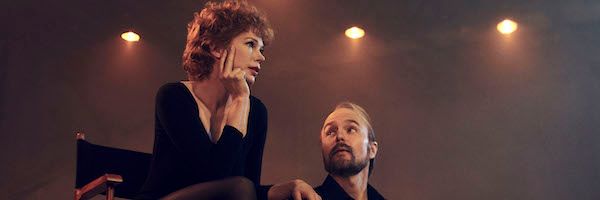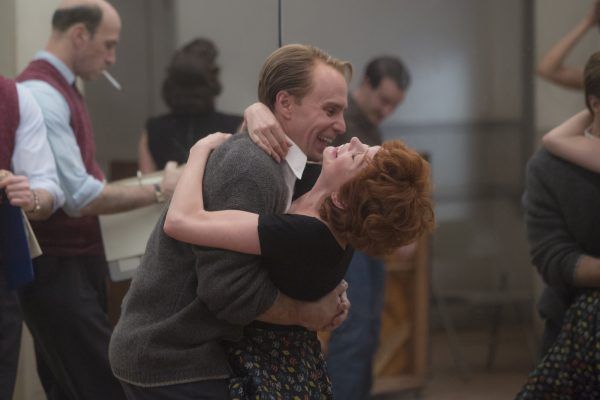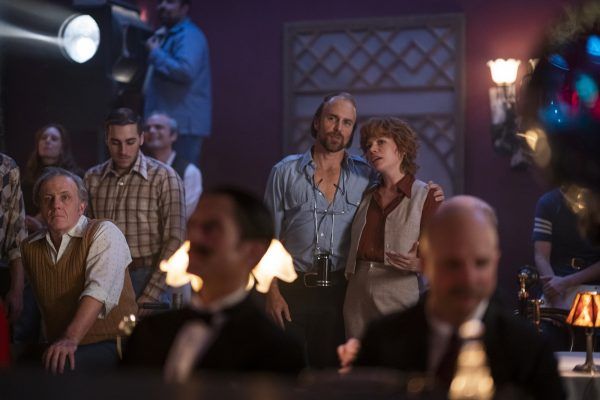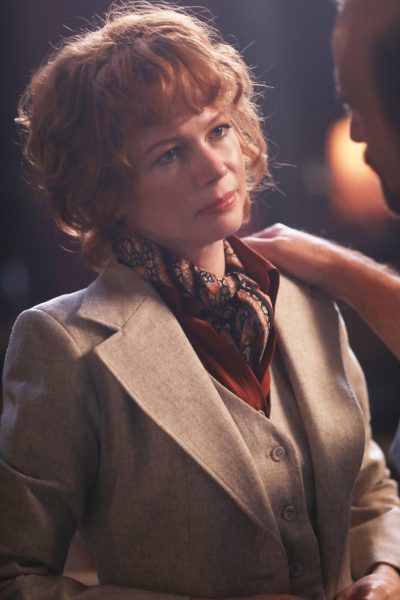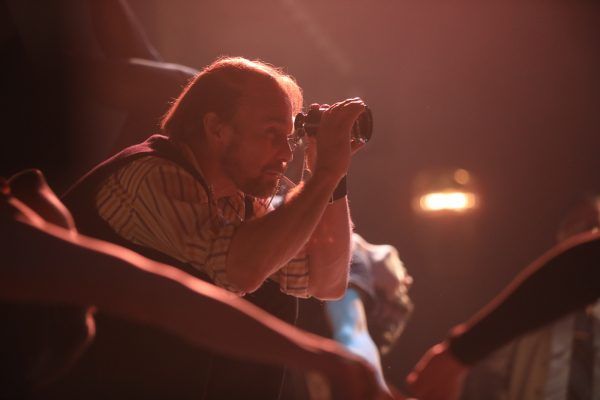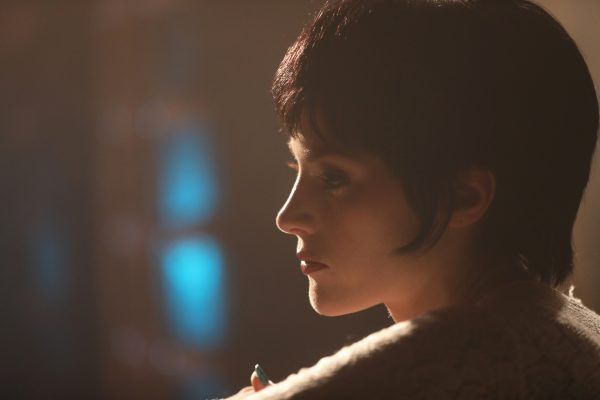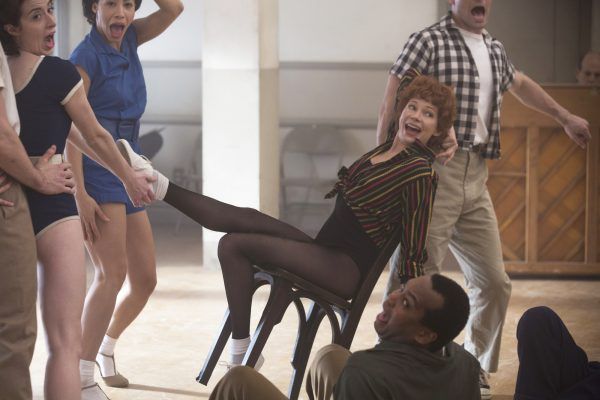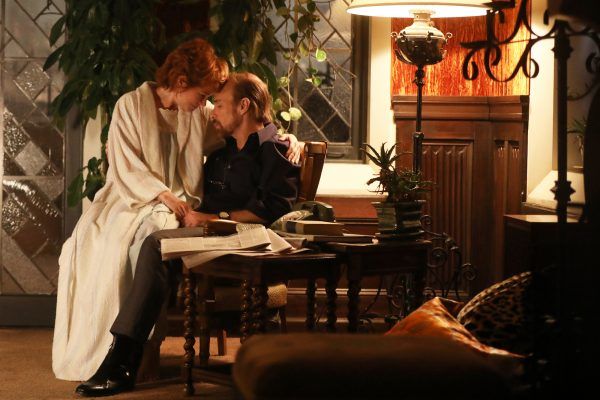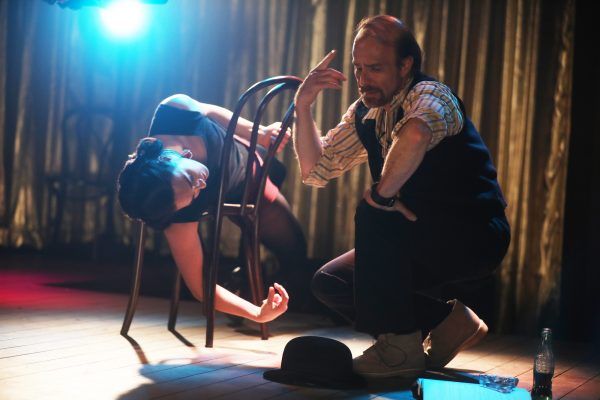The FX limited drama series Fosse/Verdon spans over five decades, as it explores the romantic and creative partnership between groundbreaking filmmaker and choreographer Bob Fosse (Sam Rockwell) and Broadway dancer Gwen Verdon (Michelle Williams), considered the greatest of all-time. While they together changed the face of American entertainment, their personal relationship was a very complicated one and their pursuit of greatness came at a definite cost.
During this interview with Collider, executive producers Thomas Kail, Steven Levenson, Joel Fields and Nicole Fosse talked about how Fosse/Verdon came about, what brought them together on the project, what was both exciting and nerve-wracking about the TV series, bringing these people’s story to the screen without making a documentary, and why they wanted to tell the specific story that they ended up telling.
Collider: How did this come about, and how did it end up being this specific story?
THOMAS KAIL: In July of 2016, Lin-Manuel was backstage at Hamilton, and he got an email from a friend of his, named Sam Wasson, who’d written a book about Bob Fosse. We’d all read the book, three years prior, when it had come out, and the book was set up at FX. Lin looked at me and said, “Do you wanna do this together?” I said, “Let me re-read the book and see what’s what.” So, I re-read the book, and I was very taken by it. I had been friends with Sam Rockwell, for about four or five years, and we had been trying to find something to do. Through happenstance, we ended up at the same hotel in London, about a month later, and we’d been trying to find something that would satisfy his criteria. This story feels like an eight-hour movie that takes place in New York, in the ‘60s and ‘70s, and I said, “I think I’ve got something for us.” Sam said yes, and I then got introduced to Steven [Levenson] through some friends at a screening of La La Land. Steven was sitting in front of me, and we were hanging out afterward and started becoming pals. We started talking about the book, and Steven said, “I would love to work on that,” so he came on as a writer-producer. Andy Blankenbuehler, who choreographed Hamilton, was a Fosse dancer. This takes us to the beginning of 2017, and Nicole [Fosse], who I love but had never met, was someone that we felt was the next part of the equation. We had to go to Nicole and say, “Here’s why, and here’s how. Is that appealing to you?,” to see if we could engage in a conversation. And we’ve not stopped talking since March of 2017.
Nicole, what was your reaction, when this came your way?
NICOLE FOSSE: Honestly, at first, I was cautious. I did not participate in Sam Wasson’s book. I’ve been saving my story for what I felt was an appropriate time, place, venue and genre in which to tell it. I didn’t have any specific ideas about that. I was just waiting for it to unfold, I suppose. And so, when I was approached about this, who wouldn’t be curious about this incredible grouping of talent? It’s not just talent, but it’s breaking the mold talent, who think outside of the box. My parents were people who thought outside of the box. They did not do what they did the last time, they did not do what people thought they should do, and they did not do what they thought people expected of them. They did what they felt, artistically and creatively, was the next boundary-breaking breakthrough for them. So, I was very curious.
Joel, how did yourself doing this, as your next project after The Americans?
JOEL FIELDS: What do you mean?! You haven’t seen the whole series yet, but they’re spies. No. I feel really lucky and appreciative to be pulled into this, by these guys, and also, really warmly embraced by them. For me, I love collaborating. It’s one of the reasons that I do what I do. I love working with creative, talented people, and building things together. These guys reached out, and it was like the perfectly designed trap. I was on vacation, and I promised myself and my family that I was gonna take a good, long break, post-Americans, but as a musical theater kid, one of the first things that I did, as a young teenager, bizarrely, was to be in a production of Cabaret at summer camp, and I also loved All That Jazz and know the movie, almost by heart, and I also knew Gwen Verdon’s work and had helped co-author a new book for the musical Can-Can, which is the musical that catapulted her from stardom to super-stardom, and then there was the chance to work with Tommy and Steven, so it was too exciting to say no. I’m really glad that I said yes because it’s been a great experience.
Steven, what most excited you about doing this, and what made you most nervous?
STEVEN LEVENSON: It was actually the same thing that made me excited and nervous. Part of the nervousness was coming from the world of theater. You can’t imagine two more beloved, more iconic people than Bob Fosse and Gwen Verdon. We are walking in their footsteps – all of us – so to take on telling their story was daunting, to say the least, and made me feel a huge sense of responsibility. What I was most excited about was finding the humanity behind these idols, and peeling back the layers of sainthood and finding the living, breathing human beings that lived there. Meeting Nicole really crystallized that for me. This was not just the story of two ground-breaking artists, but it was really the story of these two fascinating people, who shared a life together and created astonishing work together. It’s a love story, in some ways, and a creative story, in other ways, and they’re all intertwined. That messiness was really exciting to me.
Nicole, at what point did you realize that you were going to be watching actors who were actually playing you?
FOSSE: I read scripts, and I saw Nicole start to emerge there. I had to set them straight about what I was called when I was a child. The first two actresses that play the younger Nicole are sweet and lovely, they do their jobs brilliantly, and they look just right. The teenage Nicole is gonna be really interesting.
Does it feel strange to watch actors playing you?
FOSSE: It’s a little bit like Harry Potter, when you open the book and all of the characters come to life. It’s like the Harry Potter family album.
Did you guys think about representing someone who is still alive, when you were writing this?
LEVENSON: There were early readings that we did of the script, before we started shooting, and you suddenly realize that you’re in the room with Sam, Michelle, and Nicole, reading scenes as Nicole.
KAIL: There was such a meta-ness to it. We were in Sam’s apartment doing the reading, and Nicole said, “Tommy, can you just read it?” And I was like, “You want me to read you?” I had Sam on the left and Michelle on the right, and a professional actor, I am not. I’m just a human being. It was so weird.
FOSSE: For me, it made sense. If you’re telling the story that happens between the parts that you see in the films and on the stage, and you’re telling the backstage story between cut and action, then I had to be there. The character has to be there.
LEVENSON: Nicole is the only person, in world, that has her perspective on these two people. Everyone has an opinion about these two people, but Nicole is only person who grew up living with them and seeing them, in that way, so she’s essential to story. It’s impossible to imagine doing it without her, as a character or as a creative consultant.
FOSSE: It’s part of who they were, as people, too. You can talk about who he is, as a director, and who she is, as a dancer, and then you get to who they are as parents, which really becomes about this three-way interaction.
KAIL: It was a dance with three people, and not just two.
Nicole, which was harder, to watch yourself as a character or to watch Sam Rockwell and Michelle Williams playing your parents?
FOSSE: None of it has really been bizarre. It’s been very revealing. When you’re a child and you’re in a situation, you take things at face value. You don’t really understand what’s happening, behind the scenes and behind the closed doors, what it takes to get to that separation, or that relationship, or that project. As an adult, seeing all of the blanks filled in, with the dots being connected, is revelatory.
FIELDS: I also think it’s important to remember that this is not a documentary. Although Sam and Michelle did incredible work on movement and voice, and all kinds of incredible details that went into creating these characters, they’re not there to do the historical impersonations. The scene work, the acting work, and everything that Nicole is experiencing, we all know that it’s an artistic, dramatic representation of our version of this story. We want it to be authentic and honest, and true, in the sense that it captures what we see as the truth of the story, but it’s not a mimeograph of what happened.
KAIL: In casting, what you’re trying to find is essential qualities that can be brought to life. You’re trying to find the intersection between the person playing the part and the person who walked the Earth. That approach is the same, whether they’re fictional or otherwise. Sometimes you have more clues and handrails, if they existed. That can work to your benefit because there’s a perimeter around it, but you also have to be open to interpretation. You have to be open to find and search for truth, and not just document fact because we’re not able to document fact, since we weren’t there. Everybody that contributes to this, from the designers on down, are all putting forth a version of what could feel true, and letting that guide us.
FOSSE: One of the interesting things with acting is that, as an actor, you have to know all of your background, where you came from, what color your socks are, and all of that stuff. You make it all up, when you’re in a play. Here, a lot of that information is available, and then the actor has to figure out why they’re wearing red socks, and what it is about their character’s personality that caused them to put those red socks on my feet today. Gwen has certain hand gestures, and if Michelle just imitated hand gestures, she would be an imitation of Gwen Verdon’s physicality. I found a book that my mother had when she was a teenager about acting, and it showed all of these hand gestures, in order to articulate different feelings. Seeing that, Michelle could then take it back to where that came from, and then it was genuine and fresh, and not an imitation of how Gwen held her hands.
What are the biggest challenges of pulling something like this off? Is it production challenges, or is it telling the story in the limited amount of hours you have?
KAIL: I think both things can be true. We have a canvas that has a certain dimension, which is eight episodes, with a certain amount of minutes attached to each episode. We use that as a guiding principle. It’s nice to have something drawn around it because otherwise you can go anywhere.
LEVENSON: There are 10 versions of this story. We have so much story here. There is so much life in these two people. We felt always like the most important thing was zeroing in on what we wanted to include and what we could stand to part with. And then, production-wise, it’s a gigantic undertaking that Tommy is somehow managing. We have dancers and actors in different places, and there were rehearsals going on in one part of New York City with shooting in another part, and singing going on. That’s been really fun for us.
FIELDS: Ultimately, you have to think about what you can do, not what you can’t do. Those limitations are not really limitations when you focus on what it is you can do. And one of the things that we were able to do was put together an incredible team of can-doers. Melissa Toth, who’s doing the wardrobe, is extraordinary. You won’t believe the way Alex Lacamoire, who’s doing music, is creating original stuff, but also taking existing stuff and re-purposing it so seamlessly for the show. Andy Blankenbuehler and Susie Misner are doing new choreography blended with reconstructions of the original choreography. The lighting is beautiful. It just goes on and on and on. And we haven’t even mentioned the entire post department and the editors. When you see how these things are cut together and the detail, there are layers upon layers that exist in the editing.
LEVENSON: Everyone involved with this production is so passionate about the story.
Fosse/Verdon airs on Tuesday nights on FX.

